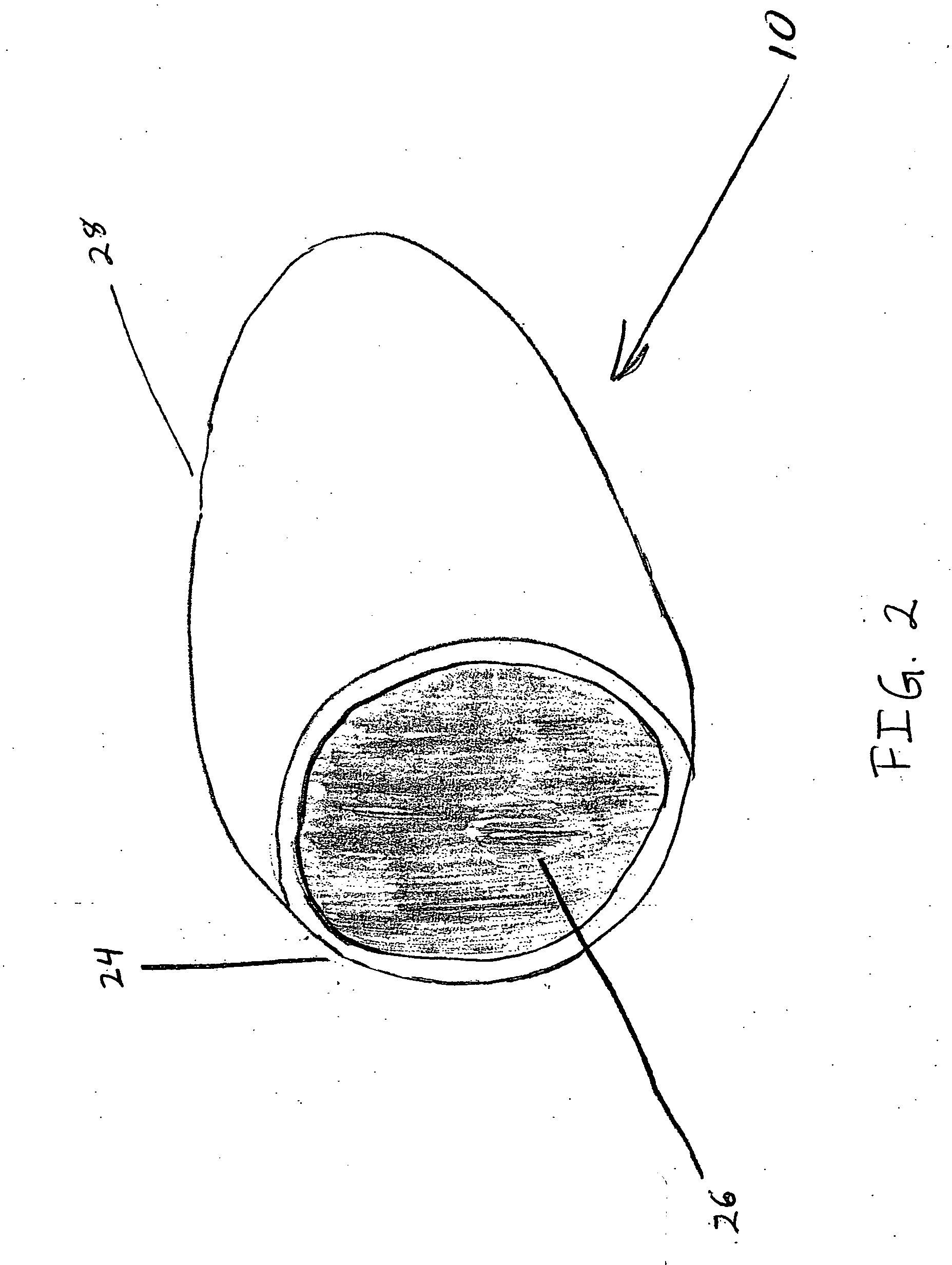Shaping suture for treating congestive heart failure
a congestive heart failure and suture technology, applied in the field of congestive heart failure treatment devices and methods, can solve the problems of congestive heart failure, poor overall treatment effect of all available therapies, and inability to improve the function of weakened heart muscle, etc., to achieve the effect of improving the overall treatment of an ischemic heart and enhancing the overall treatmen
- Summary
- Abstract
- Description
- Claims
- Application Information
AI Technical Summary
Benefits of technology
Problems solved by technology
Method used
Image
Examples
Embodiment Construction
[0047] The present invention allows more exact execution of a procedure or process whose purpose is to create a more optimum size and shape of an organ, such as the heart or more particularly a heart chamber, or another structure undergoing reconstruction. For example, one such procedure is known as Surgical Ventricular Restoration (SVR). Referring to FIGS. 1A-1C, the invention comprises a kit and a method of using the kit. The kit may include a shaping device 10, described in more detail below in association with FIGS. 3-7. In addition, the kit may include a patch 12, described in more detail below in association with FIGS. 8-11. The kit may further include a shaping suture 14, described in more detail below in association with FIGS. 12-15. In some embodiments, the kit may also include an integrated shaping device and patch, described in more detail below in association with FIG. 16. Some embodiments of the kit may further include a patch sizing template, described below in more de...
PUM
 Login to View More
Login to View More Abstract
Description
Claims
Application Information
 Login to View More
Login to View More - R&D
- Intellectual Property
- Life Sciences
- Materials
- Tech Scout
- Unparalleled Data Quality
- Higher Quality Content
- 60% Fewer Hallucinations
Browse by: Latest US Patents, China's latest patents, Technical Efficacy Thesaurus, Application Domain, Technology Topic, Popular Technical Reports.
© 2025 PatSnap. All rights reserved.Legal|Privacy policy|Modern Slavery Act Transparency Statement|Sitemap|About US| Contact US: help@patsnap.com



